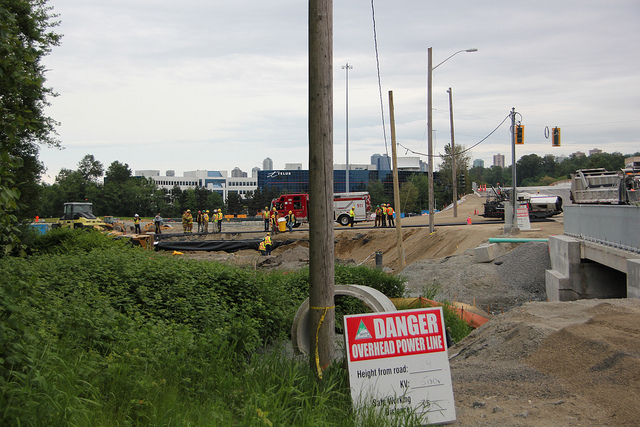The first part of this series declared that HR managers now control the basic tenor of how safety management is executed in most organizations. As veteran safety professional Mark Kennedy says, “There is now no difference between safety and human resource management. I consider them one.”
As a result, safety has adopted a kinder, gentler disposition as it emphasizes employee relationships and teamwork. A worker’s safety performance is now judged in large part by a new compulsory social norm -- civility.
Safety has become a social change movement that should worry insurers.
Experts say safety has suffered as a result of its increased focus on relational sensitivity. Workers with naturally grumpier temperaments -- a majority of workers performing safety-sensitive jobs -- feel unfairly targeted for change, or worse.
Is this concern justified, or are these workers simply part of a long-time dispositional safety problem that is only now being rectified through HR-led safety departments?
Following a dangerous path
A look at how this change is being felt by one company’s workers provides insight.
For the past three years, one large company has invested heavily in an employee safety awareness campaign designed by an HR consultant. The campaign includes training classes in which employees are equipped with relational skills to improve the company’s safety climate. Topics are standard training fare -- teamwork, leadership, communication, supervising -- aided by insight gained from a behavior assessment tool.
Initial results indicated that the company reaped an improvement in both safety attitude and incident rates. Thereafter, rates plateaued. Employees now quietly question the campaign’s viability.
Upon review of the campaign by independent sources, it was noted that training instructors were telling participants that they must avoid using what could be perceived as critical or confrontational behavior toward others, even if used to keep them from imminent injury.
A typical reaction came from one worker, who looked on incredulously when he was told that he could not raise his voice to stop a coworker from potentially injuring himself. Yelling to prevent injury would be as harmful as allowing the coworker to risk injury. Civility must prevail.
In another training class, students expressed shock at the audacity of someone who bluntly told a coworker to “get your hand back inside the elevator door” as it closed. (The coworker was holding the door open for a late-arriving colleague, a violation of safety policy.) Shame, shame, the class repeated in Gomer Pyle-like unison. Shame on the worker for acting rudely.
If these instances were isolated cases, there would be no cause for concern. But other companies mirror a similar trend.
Reaching beyond good intentions
Such a foray into forced sensitivity was never intended.
Two decades ago, pressure from safety regulators and large insurance brokers caused many companies to improve the safety-critical "people skills" of their labor force. Of greatest concern were interpersonal communication skills most often cited as being involved in incidents.
The consensus among company managers was that specialized employee development personnel with HR-like perspective were needed to better facilitate the training effort. Existing safety instructors wouldn’t do.
Some companies turned over the keys entirely to their HR departments.
Symbolic of this was a 1994 meeting in the boardroom of a large maritime company whose vessel personnel lacked the necessary interpersonal skills to safely manage crewmen and conduct operations. Determining a path to improvement was the sole item on the agenda.
The meeting was held under the watchful eye of the company’s risk management consultant. Present were the company’s executive vice president, its HR manager, a client-representative, a regulatory authority and a training contractor. No company safety representative was invited.
The company approved an extensive safety-training program for vessel officers that day. Its focus was simple: Improve communication skills. More than 1,200 of the company’s vessel officers eventually participated. Other companies used the same blueprint to train 2,300 of their officers.
Maritime executive Larry Rigdon says that the training contributed significantly to “a positive change in employee attitude toward themselves, the company and the industry.”
With the widespread success of training initiatives like this, safety discovered its softer side, and HR was given a change agent that it could use for broader purposes than risk control.
Large insurance brokers quickly fell into formation, strongly suggesting -- sometimes demanding -- that their customers recast their safety programs in the civility-first mold. But brokers did not envision the long-term effects of their endorsement.
Looking back, the risk manager present at the maritime company’s 1994 meeting (who wishes to be anonymous) states that early training efforts were focused on developing leaders who would “manage the loss-reduction process.” Relational skill-development was undertaken for a specific purpose, so that employees could better convey “where they are going and whether or not they have reached their objectives . . .to reinforce tactics and targets.”
The soft side of safety was created to enable workers to achieve concrete objectives, not to teach haters to be likers, or convert negative-mood individuals into positive ones or to intimidate those who do not fit a preferred mold.
Correcting course
Only insurers have the muscle to reverse the tide of the paralyzing civility movement within safety. Like two decades ago, they must exert influence with customers who need direction.
Here are a few things that insurers can do to right the balance of the listing safety ship:
-- Sit down with the customer and ask the following three questions:
Standard-setting
Which department establishes the behavioral standards of how employees should personally relate to each other in fulfillment of the company’s safety mission?
Training
Which department is responsible for training employees in those standards?
Enforcement
Which department holds workers accountable, and how?
Search for duality or overlap (between HR and HSE) that may be confusing to those responsible with accomplishing the safety mission -- that’s everyone.
-- Poll the customer’s safety representatives confidentially. Ask their opinion about the direction of the company’s safety management program.
Give credence to the opinions of long-time safety professionals who have witnessed the evolution discussed here.
-- Review the vision, mission and goals of the customer’s safety program independently and determine how they are accomplished within the customer’s real work climate.
Search for tangible evidence that the core elements of loss prevention are being achieved as a first priority.
Insurers should present their findings, along with recommendations, to the customer.
The long-standing safety goal of
zero incidents turned into
zero tolerance years ago. Under HR’s influence upon safety, the policy frighteningly approaches
intolerance. Now is the time to reverse the trend.
Then again, as a reformed hater, perhaps I am just being too sensitive.


